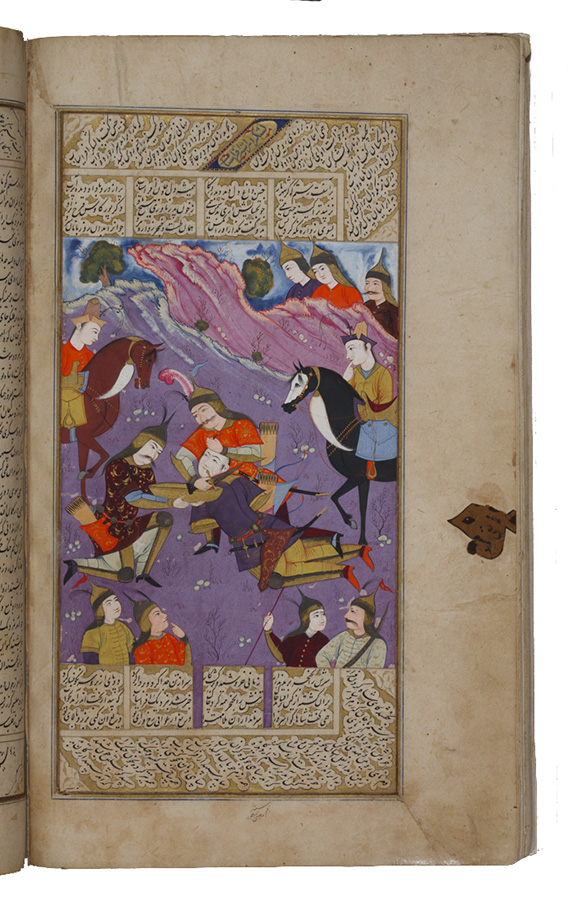Manuscript B, no. 2-347 (David folio 74b)
Farāmarz Slits Sorḵa's Throat
Location: The David Collection, Copenhagen, Denmark, #217/2006, folio 74b.
Page: 35.2 x 21.8 cm.
Painting: 20.0 x 14.0 cm. including painted spaces between the text columns. (Scaled)
Text area: 28.7 x 14.0 cm. (Scaled)
Signature in the center of the lower margin: raqam-e kamina moʿin-e moṣavver.
Sorḵa, the son of Afrāsiyāb, led the Turanian army in battle against the Iranians with Farāmarz at their head. Farāmarz succeeded in unhorsing Sorḵa and then caught him when he fled. He took Sorḵa, bound, to Rostam, who ordered that he be killed on the plain just as had happened to Siyāvoš. Here, like Siyāvoš, his head is held back by a soldier who beheads him over a bowl that catches his blood. While the soldier has been identified as Farāmarz, the text does not specifically state that Farāmarz committed the deed. The painting contains more figures in the foreground and middle ground than many of Moʿin's illustrations, but it conforms to his norms of palette and landscape treatment and includes the beardless and mustachioed faces found in every painting in this manuscript. The two grooms with tall caps closely resemble those in the painting of Rostam and Soḥrāb (no. 2-172) and serve as a framing device for the murder taking place before them. Reżā had used the same device is his depiction of the meeting of the Mughal ambassador, Khan ʿĀlām, and Shah ʿĀbbās I, known by a later copy (fn.37). Since Moʿin copied single figures from Reżā's composition (fn.38)., he would have been familiar with the original and may well have derived the idea of where to place the grooms and horses from Reżā's work.
Painting references:
Canby_ Journal_2010, p.65 no. 11 and p.90, fig.22.
Text references:
Warner, II, pp. 344-48.
Photo: Permille Klemp. Courtesy of The David Collection, Copenhagen
Sheila R. Canby
Last Updated: May 3, 2014 | Originally published: 2010
